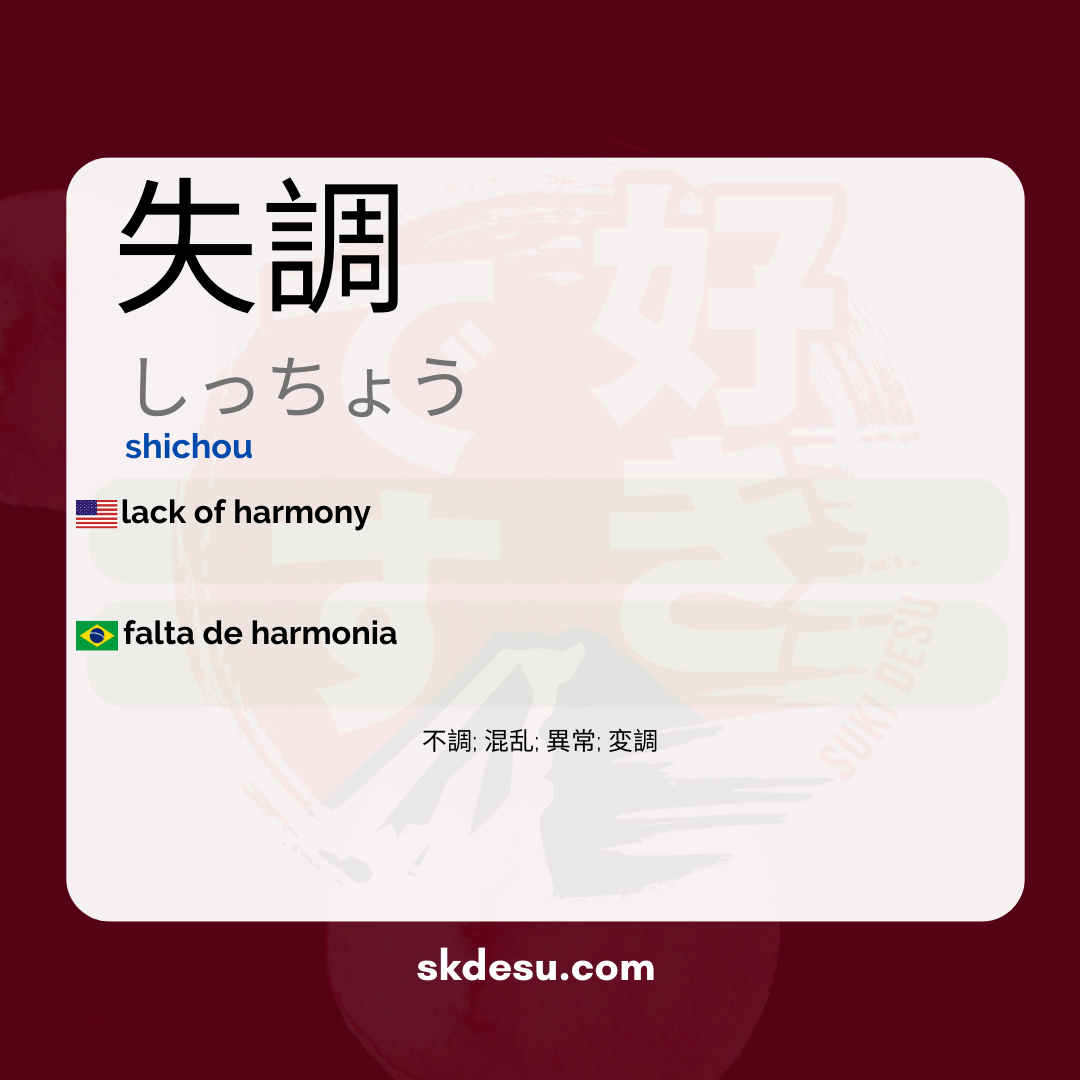Translation and Meaning of: 失調 - shichou
The Japanese word 失調[しっちょう] may seem complex at first glance, but its meaning and usage are more common than many imagine. In this article, we will explore what this expression represents, its origin, translation, and how it is applied in everyday life in Japan. If you are learning Japanese or simply have an interest in the language, understanding terms like this can enrich your vocabulary and cultural understanding.
In addition to uncovering the meaning of 失調, let's analyze its context in sentences, its frequency of use, and even tips for memorizing it effectively. Suki Nihongo, the best online Japanese dictionary, provides accurate information for those who wish to master this and other essential terms. Shall we begin?
Meaning and Translation of 失調[しっちょう]
失調[しっちょう] is a compound word made up of the kanjis 失 (loss, failure) and 調 (harmony, adjustment), forming the meaning of "imbalance" or "disorder." In medical contexts, for example, it can refer to a "functional disorder," such as 自律神経失調[じりつしんけいしっちょう] (autonomic nervous system imbalance). In daily life, it can indicate a lack of synchronization or coordination.
Although it is not an extremely common expression, it appears in discussions about health, psychology, and even in social analyses. Its closest translation in English varies depending on the context, which could be "mismatch," "dysfunction," or "coordination failure." It is important to note that it carries a nuance of something that should function harmoniously but is not in its ideal state.
Origin and Cultural Use
The origin of 失調 traces back to the classic combination of kanjis that express opposing concepts: loss (失) and balance (調). This construction is common in technical and academic terms in Japan, especially in fields like medicine and psychology. The word gained relevance in the 20th century, with the advancement of studies on mental health and physiology.
Culturally, Japan values harmony (和, wa), so a term that indicates a lack of it draws attention. 失調 is not used casually in daily conversations, but it appears in news reports, scientific articles, and discussions about well-being. Its usage reflects a society that carefully observes deviations from what are considered healthy or balanced standards.
Tips for Memorizing and Applying
An effective way to remember 失調 is to associate its kanjis with concrete situations. For example, imagine a clock (that needs adjustment, 調) broken (loss, 失) to recall the concept of "imbalance." Another strategy is to create flashcards with real examples, such as 体内リズムの失調 (imbalance of the body rhythm).
Practicing with specific contexts also helps. If you are studying medical terms, for example, you can note phrases like ホルモン失調 (hormonal imbalance). The important thing is to link the word to situations where the lack of harmony or proper functioning is the main focus. Over time, your brain will make these connections naturally.
Vocabulary
Expand your vocabulary with related words:
Synonyms and similar words
- 不調 (Fuchou) - Discomfort, health issue or abnormal condition.
- 異常 (Ijou) - Abnormality, something out of the ordinary, irregularity.
- 変調 (Henchou) - Change, alteration of condition, often related to a health status.
- 混乱 (Konran) - Confusion, disorder, chaotic state.
Related words
Romaji: shichou
Kana: しっちょう
Type: noun
L: jlpt-n1
Translation / Meaning: lack of harmony
Meaning in English: lack of harmony
Definition: Lack of coherence in the mind, emotions, and actions.
Quick Access
- Vocabulary
- Writing
- Sentences
How to Write in Japanese - (失調) shichou
See below a step-by-step guide on how to write the word by hand in Japanese. (失調) shichou:
Example Sentences - (失調) shichou
See below some example sentences:
Nenhum resultado encontrado.
Other Words of this Type: noun
See other words from our dictionary that are also: noun

